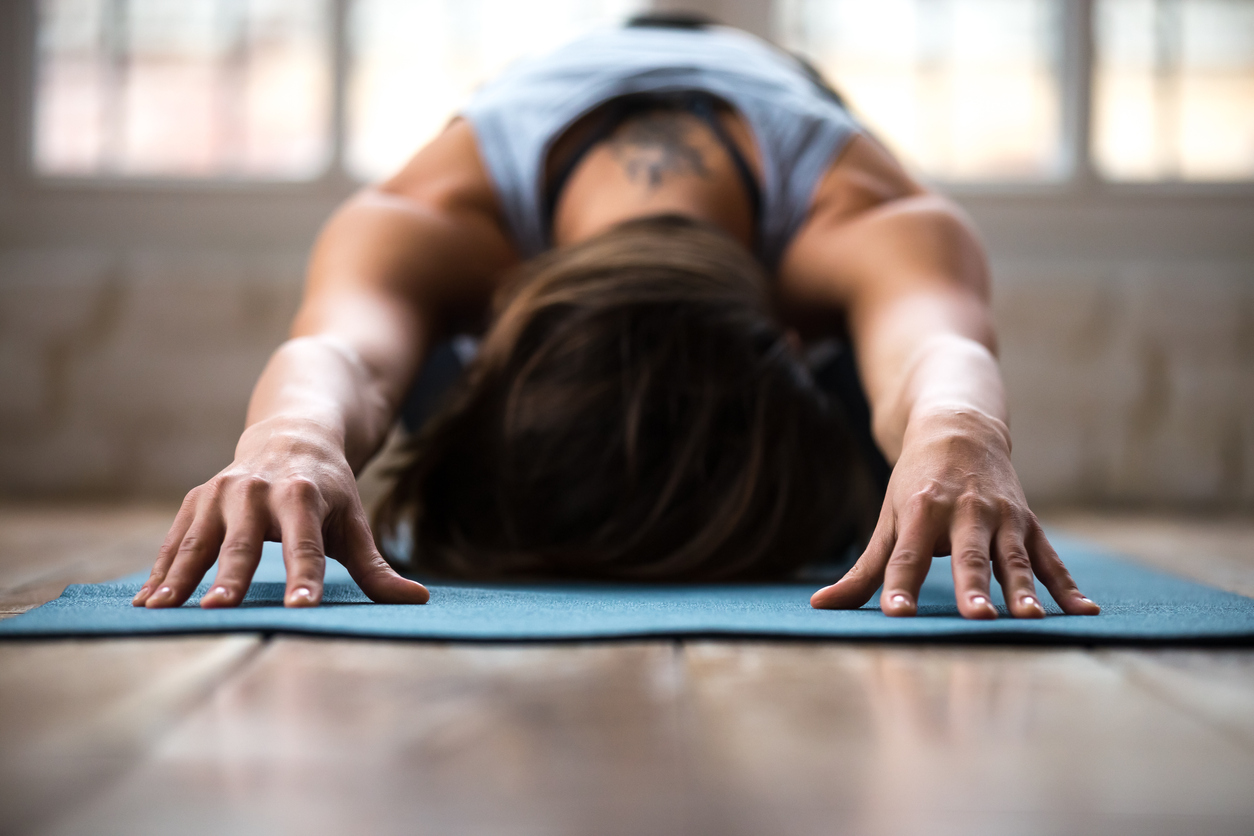Calm, cool, passive, and slow. These are some terms that describe what it can be like to take a yin yoga class, but what is yin yoga exactly? If you are a practitioner of heated, strengthening, or movement-based yoga classes, think night versus day when it comes to a yin practice. In a world where we are often told that we need to do more, yin yoga asks us to do a little less. Postures are typically held anywhere from 2-5 minutes or more, and the breath is softer than say Ujjayi Pranayama, Victorious Breath, that you may practice in a Flow class. However, just because this style of yoga is slower and more passive, doesn’t mean it is without challenge. Yin yoga is also different than restorative yoga. Let’s dive into the benefits of yin yoga.
What Is Yin Yoga
The description and benefits are in the name itself, Yin. To describe yin yoga, it can be helpful to describe yang styles of yoga first. The movement-based yoga mentioned above is a yang style of yoga. Meaning it is active, dynamic, and muscular work is a focus. Some examples of a yang style of practice are Ashtanga, Vinyasa, Bikram, Power, or Hatha yoga. Yin yoga has the same aims as any other practice of yoga, however, it’s slow, passive, mostly seated postures, are less about muscular utilization or contraction and instead target deeper connective tissues. This is also what makes it different from restorative yoga.
Restorative yoga is very supportive through the use of props, to restore the body and mind to balance through very passive postures without any active stretch. Yin yoga may use props; however, the intent is a deep level of ‘stretch’, or healthy physical stress to the connective tissues, where the challenge can be to find peace and ease in a pose that is slightly uncomfortable. Remember that too much discomfort in a pose can be damaging to the body and counterintuitive to the intention of the practice! Less is often more in yoga, listen to your body and modify where needed.
Yin yoga additionally works with the meridian lines, or energy flows and channels, of the body. The conduits of energy that create Qi (Chi), or Prana, life-force energy. According to the philosophies and teachers of yin yoga, a blocked meridian line can lead to emotional or mental imbalances, and even physical imbalances. Specific yin postures and how they are sequenced are said to bring forth health in this way.
Benefits Of Yin Yoga
Below are three physical benefits of yin yoga and why focusing on your deep connective tissue is something to be interested in.
1. Connective Tissue
Connective tissue is a general term to describe the material in your body that supports and surrounds other tissues and is even the material in between cells. Connective tissue includes bones, ligaments, joints, and fascia of the body, and this is the focus in a yin class. Long, passive stretches and compressions in the yin postures stress the connective tissue which has the potential to lead to lengthened, healthy, hydrated, and strengthened tissue.
2. Joint Health
Decreased range of motion in joints such as the hip joint, can cause stiffness and lack of mobility. This can be caused by a myriad of factors, yet it could mean the connective tissue around and within the joints has either shortened or become ‘dry’ so to speak, due to lack of use. Since yin yoga targets connective tissue such as fascia, which is everywhere in the body, joint lubrication can occur since fascia stores and moves water and fluid.
3. Flexibility
You may have heard an instructor say that if you want to increase your flexibility, take yin yoga. Why? The theory behind this concept is that our bodies are more malleable than we give them credit for. The long static holds in yin can increase the elasticity of the connective tissue, such as the muscular fascia, and the healthy amount of stress on the joints in these poses can strengthen the ligaments. This goes in line with joint health, yet it can also mean an increased range of motion in terms of flexibility. Many yin postures focus on the lower half of the body and the spine, and advocates of yin have claimed to find increased flexibility especially in these areas. While the permanence of this increased flexibility is debatable, many practitioners advocate for this particular physical benefit.
Learn More About Yin Yoga
As with most things in life, balance is key. You can overdo it in a yin class, just as you can overdo it running, lifting weights, or in a heated yoga class. The key is to learn how to listen to your body and be patient in your Asana, physical practice. Additional scientific research needs to be done on the physical benefits of a yin practice. However, proponents of yin conclude that these passive and compressive postures can indeed increase the health of connective tissue and lead to less pain in the body, increased flexibility, fascia suppleness, overall stress reduction, and the ability to embrace the beauty in slowing down. What do you think? Contact YogaaRenew for more information.





